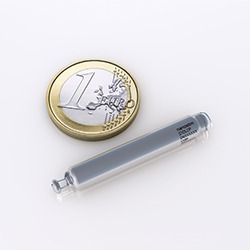 A miniature leadless pacemaker was safe and effective at three years in the first-in-human LEADLESS study, according to a research letter published in Circulation. However, one patient experienced a complication related to battery malfunction, which led to a battery advisory sent to doctors and redevelopment of battery components, researchers reported.
A miniature leadless pacemaker was safe and effective at three years in the first-in-human LEADLESS study, according to a research letter published in Circulation. However, one patient experienced a complication related to battery malfunction, which led to a battery advisory sent to doctors and redevelopment of battery components, researchers reported.
For the LEADLESS study of the miniature leadless pacemaker (Nanostim, St. Jude Medical/Abbott), 33 patients (mean age, 77 years; 67% men) were enrolled and followed for a median of 38 months. One patient did not receive the device because of a problem during implantation and another was converted to an implantable cardioverter defibrillator.
At 3 years, 74% of patients were still alive, and no deaths were attributed to the device, Fleur V.Y. Tjong, from AMC Heart Center, department of clinical and experimental cardiology, Academic Medical Center, Amsterdam, and colleagues wrote.
At 40 months, rate of freedom from serious adverse device effects was 89.9% (95% CI, 79.5-100) and three patients experienced device-related complications, according to the researchers.
One patient had a procedure-related perforation leading to cardiac tamponade, one patient had an inadvertent placement of the device through a patent foramen ovale leading to removal and re-implantation, and one patient at 37 months had a device malfunction due to abrupt loss of communication caused by battery malfunction; this device was removed and replaced, and the company issued the battery advisory, Tjong and colleagues wrote.
There were no cases of late device dislodgements, device infection or pacemaker syndrome, according to the researchers.
At 36 months, electrical performance of the device was adequate, including pacing thresholds, R-wave amplitude and impedance, they wrote.
“The overall the complication rate of 10.1% is comparable to previous reports of transvenous pacemaker complications,” Tjong and colleagues wrote. “Development of a new battery should resolve the battery malfunction issue. The adequate performance and freedom from serious adverse device effects at midterm follow-up in this first-in-humans patient cohort support the use of leadless pacing as an alternative to transvenous pacing, especially considering the promise of decreasing long-term pacemaker complications.”












